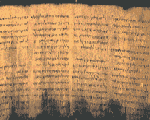


Open Skies - Introduction
At a Geneva Summit Meeting with Soviet Premier Bulganin in 1955, President Eisenhower proposed that the United States and Soviet Union conduct surveillance overflights of each other's territory to reassure each country that the other was not preparing to attack. The fears and suspicions of the Cold War led Soviet General Secretary Nikita Khruschev to reject Eisenhower's proposal. Thirty-four years later, the Open Skies concept was reintroduced by President Bush as a means to build confidence and security between all North Atlantic Treaty Organization (NATO) and Warsaw Pact countries.
In September 1989, an international Open Skies conference involving all NATO and Warsaw Pact countries opened in Ottawa, Canada. Subsequent rounds of negotiations over the next three years were held in Budapest, Hungary; Vienna, Austria; and Helsinki, Finland.
On March 24, 1992, the Open Skies Treaty was signed in Helsinki by Secretary of State Baker and foreign ministers from 23 other countries. It will enter into force 60 days after ratification by 20 signatories. The Treaty's intent is to strengthen the signatories' ability to prevent conflicts and manage crises by promoting openness through reciprocal unarmed aerial observation flights. By engendering confidence through transparency of military forces and activities from Vancouver eastward to Vladivostok, the Open Skies Treaty contributes to the security of all signatories. The Treaty permits an annual quota of overflights by observation aircraft equipped with cameras, an infrared imaging system, and synthetic aperture radar. Recorded data is available to all signatories.
In November 1992, President Bush assigned responsibility for overall leadership, management, coordination, and support for U.S. Open Skies observation missions, including U.S. observation teams and escorts, linguists, training and transportation, to the On-Site Inspection Agency. While the Air Force provides the OC-135 observation aircraft and crew, OSIA provides Open Skies inspectors, flight monitors and observers, linguists and escorts.
When the Treaty first enters into effect, obser vation aircraft will be allowed to carry panoramic, framing and video cameras as well sideways- looking synthetic aperture radar (SAR). During the first three years, observation aircraft will be allowed to carry infra-red (IR) scanning devices if both parties agree on that particular flight, but after three years, IR scanning may be used on any flight.
Even though sensor resolution is somewhat constrained, the sensors will provide information that cannot be acquired by commercial satellites. In dustrial equipment, vehicles and minor facility modifications can be identified, and people engaged in activities can be detected.
The SAR permits observation aircraft to perform their missions in bad weather and at night. The infra-red scanner will allow the aircraft to "see" differences in the temperature of objects on the ground, especially operating machinery or vehi- cles, even through thin coverings such as camou flage netting.
Open Skies overflights may pose new risks for US facilities that should be carefully assessed. Outdoor activities such as research, development, testing, evaluation, and modification pro grams on aircraft, helicopters, ships, tanks and other vehicles that are classified or sensitive may now be at risk. Signatures or indicators -- such as plant layouts, power sources, ventilation systems, cooling ponds, and pollution of vegetation -- that could reveal proprietary information to a highly skilled analyst should also be assessed. In many cases, a potential problem can be solved by properly covering or moving an item of concern inside prior to an Open Skies overflight mission.
The Department of Defense has established the Defense Treaty Inspection Readiness Program to assist the U.S. government and contractor commu nity in limiting the loss of information during in spections or overflights of U.S. facilities under arms control agreements. DTIRP has developed an early warning notification system, that is derived from the agreed Open Skies flight plan, to notify facilities that could be imaged during an overflight.
This automated notification system can provide various types of advance warning beginning with the initial 72 hour notice of intent to conduct an observation flight in the US, through notification of imminent flight departure for the mission. Upon request, a facility or facilities can be included in the notification system.
http://www.fas.org/nuke/control/os/intro.htm
Maintained by Webmaster
Current as of September 6, 1996





